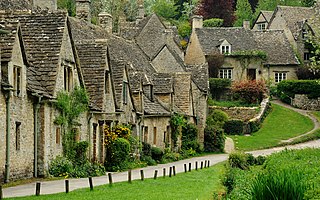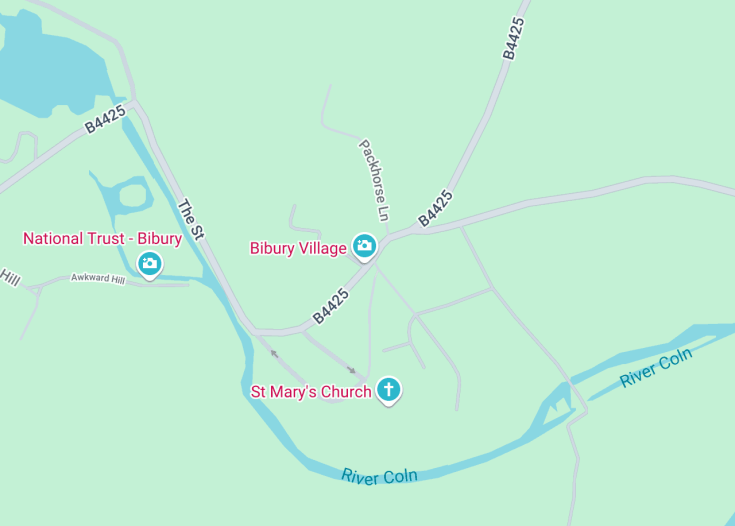Nestled in the picturesque Cotswolds of Gloucestershire, Bibury is a quintessential English village renowned for its historic charm and natural beauty. This destination is famously captured in William Morris’s endorsement as the “most beautiful village in England”. Characterized by its traditional honey-colored stone cottages and the tranquil River Coln, Bibury offers a timeless escape into the heart of rural England, providing a perfect snapshot of old-world enchantment amidst rolling landscapes.
When visiting Bibury, ensure to explore the Arlington Row, a notable set of cottages dating back to the 14th century, ideal for historic architecture enthusiasts.
Plan your visit for the early morning or late afternoon to avoid crowds and experience the peaceful essence of the village in its most serene state.
Top things to do & see in Bibury
Select the following sights and activities to discover best tickets and tours available in Bibury.
Bibury: A Quintessential English Charm
| Country | England (United Kingdom) |
| Time in Bibury | GMT+0 |
| Language spoken | English |
| Population | 627 (as of 2021, source: Office for National Statistics) |
| Currency | British Pound (GBP £) |
| Airports |
|
Bibury, a village in Gloucestershire, England, eloquently encapsulates the historical and picturesque essence typical of the Cotswolds region. Famed for its honey-colored stone cottages and tranquil landscapes, Bibury’s Arlington Row, a series of cottages built in 1380 initially as a monastic wool store and converted into weavers’ cottages in the 17th century, are renowned worldwide. They symbolize classic English rural architecture and have been featured on the inside cover of all United Kingdom passports, a testament to their iconic status.
The village itself appears to have sprung from a bygone era, featuring lush meadows and the gently flowing River Coln. Visitors are often taken by the charm of the Bibury Trout Farm, one of the oldest in the country, which offers an insight into sustainable aquaculture practices pivotal to rural English communities. The village is also home to Bibury Church, originally built in the 8th century and expanded in the 12th century, which provides a glimpse into the architectural styles and religious practices over centuries.
Bibury is not just a visual pleasure but also offers a tactile experience of history, immersing visitors in a world where the pace of life slows, allowing one to savor the natural beauty and historical architecture preserved so meticulously over the centuries. The village continues to inspire artists, filmmakers, and writers who are captivated by its serene beauty and the preservation of its traditional English charm.
Where is Bibury?
Located in the Cotswolds, a region in south-central England known for its rolling hills and rural charm.
Distances:
| Route | Distance by car | Time by car |
|---|---|---|
| London to Bibury | 93 miles | 2 hours |
| Oxford to Bibury | 31 miles | 50 minutes |
| Bristol to Bibury | 45 miles | 1 hour 10 minutes |
What is Bibury famous for?
Bibury is famous for Arlington Row, regarded as one of England’s most iconic and picturesque street scenes, and a representation of traditional English architecture.
History
Prehistoric to Medieval Times
The area of Bibury, in the Cotswolds of England, has traces of habitation that date back to prehistoric times. Settlements manifested along its fertile river valleys as early as the Iron Age. The Romans recognized its strategic and agricultural importance, leaving behind a legacy of roads and villas. By the Medieval Period, Bibury was firmly established, with mentions in the Domesday Book of 1086, indicating its significance under Norman rule. This period solidified its place as a staple village in the English countryside with farming and wool production as its mainstay.
15th – 17th Century: The Rise of the Wool Industry
Bibury’s prosperity in the late Middle Ages owed much to the flourishing wool trade. The 15th and 16th centuries saw the village thrive as a center for wool production. Arlington Row, a notable set of weavers’ cottages constructed in the 14th century and later converted in the 17th century, is a standing testament to this prosperous era. Its picturesque structures are some of the most photographed examples of traditional English rural architecture, reflecting the wealth generated from the wool trade during that period.
18th Century to Modern Day
As the wool trade declined, Bibury transitioned into a quieter pace of agriculture prevailing through the 18th and 19th centuries. However, the village’s charm and preserved beauty began to attract visitors in the Victorian era, initiating its reputation as a quintessential English village. Today, Bibury is celebrated for its historical architecture and its scenic, tranquil countryside. It continues to draw visitors worldwide, preserving its heritage while maintaining a gentle embrace with modernity.
Visit Bibury
What to see and do in Bibury, England (United Kingdom).
In Bibury, the allure lies in its preserved historical architecture and the natural beauty surrounding it. A must-visit is Arlington Row, renowned for its picturesque line of weavers’ cottages that date back to the 14th century. Visitors often explore the Bibury Trout Farm, one of Britain’s oldest working trout farms, offering a hands-on experience with nature. For a touch of history, the Church of St. Mary, dating back to the Saxon era, offers insights into the architectural styles through the centuries.
- Arlington Row cottages
- Bibury Trout Farm
- Church of St. Mary
- Walk along the River Coln
Festivities in Bibury
Bibury hosts several quaint events through the year that reflect its cultural heritage. The Bibury Fest, often held in July, celebrates local crafts, food, and music, offering a taste of traditional English village festivities. The seasonal Christmas fair is another highlight, where the village glows with festive lights and markets selling local produce and handicrafts.
Best time to visit Bibury
The best time to visit Bibury is late spring through early autumn (May to September). During these months, the weather is charmingly mild, and the countryside is vibrant, ideal for exploring the natural and architectural beauty of the village.
Is Bibury worth visiting?
Bibury is absolutely worth visiting for anyone seeking a picturesque retreat into historical England. It exemplifies the quintessential English countryside with its historical stone cottages, ancient parish church, and lush landscapes straight from a painting. The village not only offers a peaceful getaway but also immerses visitors in England’s deep-rooted heritage and culture, making it an enriching excursion for history buffs, nature lovers, and photographers alike.










